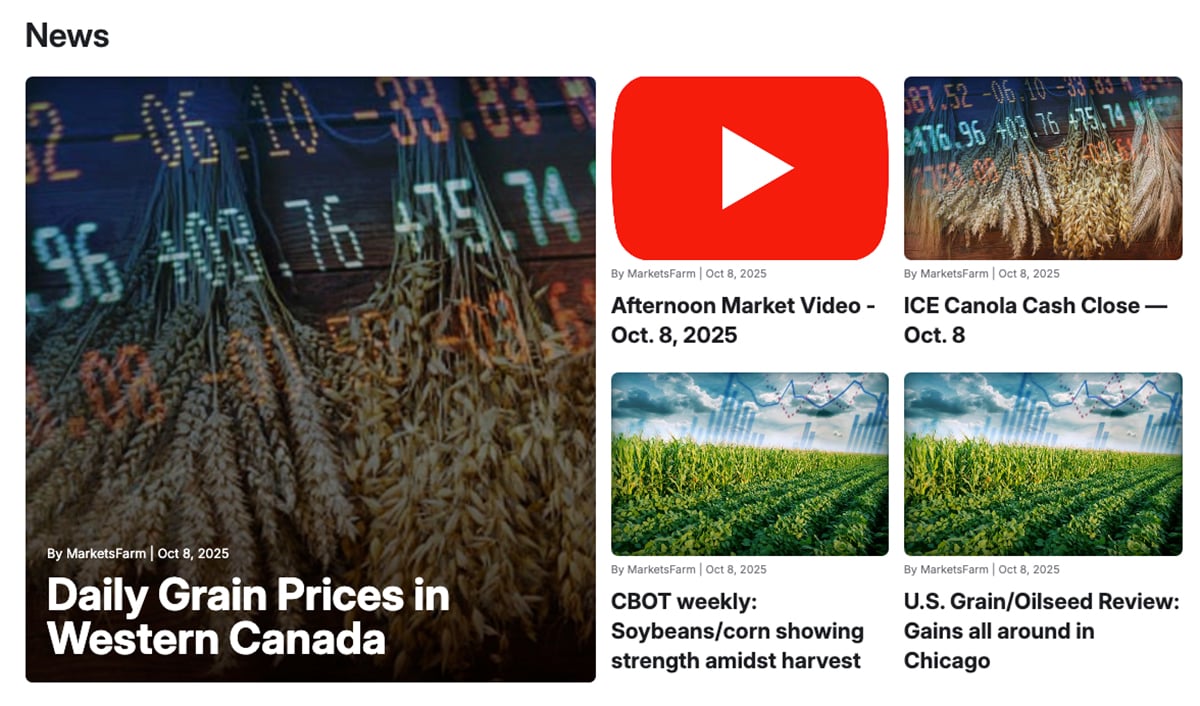The last thing hog producers want to hear is that the full weight of the present price storm might not yet have struck.
But that’s a real possibility, says Jim Robb of the Livestock Marketing Information Center in Denver, Colorado.
“By historical norms we would say it’s too early to be the bottom of the hog cycle,” he said.
“If we have a normal situation where it takes several quarters to respond to lower prices … this would not be the low in this hog cycle.”
Read Also

VIDEO: Catch up with the Western Producer Markets Desk
The Western Producer Markets Desk provides daily updates on agricultural markets, with recent video commentary including looks into canola, wheat, cattle and feed grains.
Canadian farmers have been losing money for months and are racking up losses of about $50 per pig every time they head to market, but American producers have dipped into the red only in the last few weeks.
Canadian producers are ravaged by the combination of feedgrain prices that are much higher than U.S. corn prices and a Canadian dollar now stronger than the U.S. buck.
Hog prices normally slump in the fourth quarter, and this year the pain is compounded by coinciding with the low price point of the four-year hog cycle.
Buffeted on all sides, many Canadian producers are stunned.
Normally the low price phase of the hog cycle prompts producers to scale back production, which sets the cycle on its way to higher prices.
But because American hog producers are not yet losing much money and have made a lot of money in recent years, there is no stampede south of the border to reduce sow numbers and scale back production.
The longer it takes for them to reduce production, the longer prices will stay low.
Robb said he and other analysts were surprised by the recent U.S. Department of Agriculture’s Hogs and Pigs Report, which showed the national herd expanding and more hogs being slaughtered.
Not much spare slaughter capacity is left, and the steady flow of hogs to market will probably cause prices to stay low through the fourth quarter of 2007 and into the first quarter of 2008.
But the real danger is that this mild price downturn – at least in American eyes – will not reduce the sow herd. If sow numbers stay high, then a great oversupply could glut the market in the fourth quarter of 2008 and cause a 1998-like price collapse.
“That’s the really ugly quarter,” Robb said.
“I’m not saying that will happen, but we’re a lot closer to it than we were a month ago.”
The hog cycle has modified in recent years. The price swings are about the same, but the hog population numbers have stayed more even. That means it’s hard to tell how much sow liquidation is necessary to prevent the present price weakness from getting worse in 2008.
“Will the current structure of the industry allow a rather quick change or a rather slow change? That’s the question,” Robb said.
The production reduction needed to support prices might all take place in Canada, he said. The devastating prices Canadian producers are receiving may cause many to reduce production or get out of the business altogether, which would help reduce the supply pressure that’s causing the problem.
Most of the expansion in the North American hog herd in the last 10 years occurred in Canada. The formerly weak Canadian dollar helped spark the growth and now the strength of the loonie is working to speed herd reduction.
“We’re really waiting for and anticipating the Canadian hogs report,” Robb said about the Statistics Canada livestock report expected in late October.
If there is no large reduction on Canadian farms, there’s little reason to expect North American market prices to recover soon, he said.
“We’ve just got a bunch of cross currents here, so I don’t think this fall necessarily is the low of the cycle.”

















